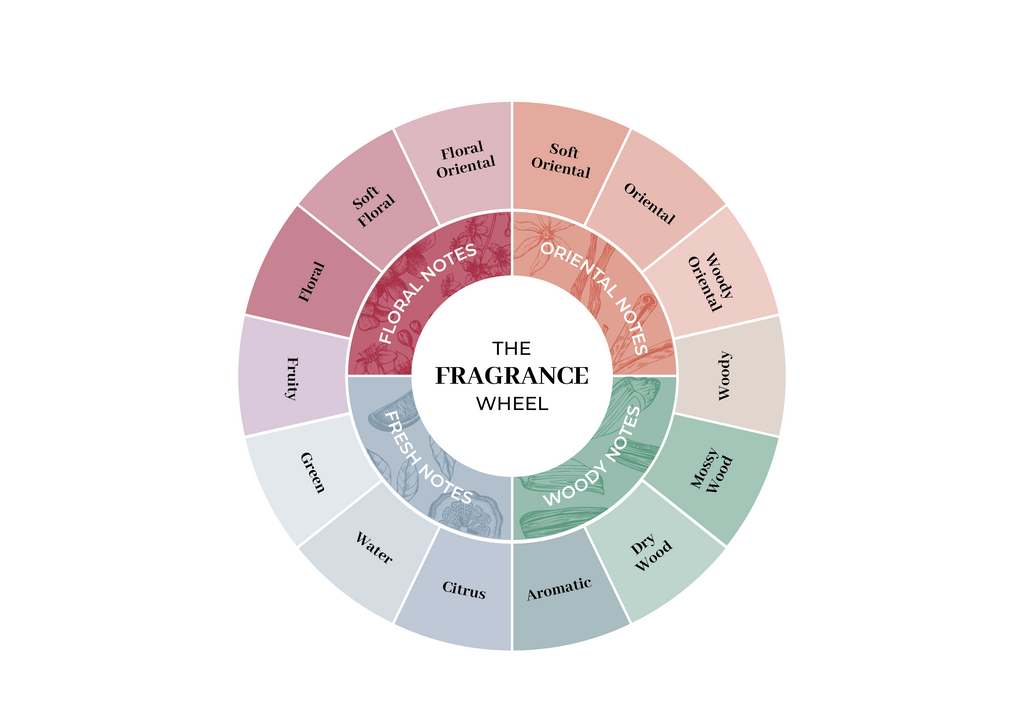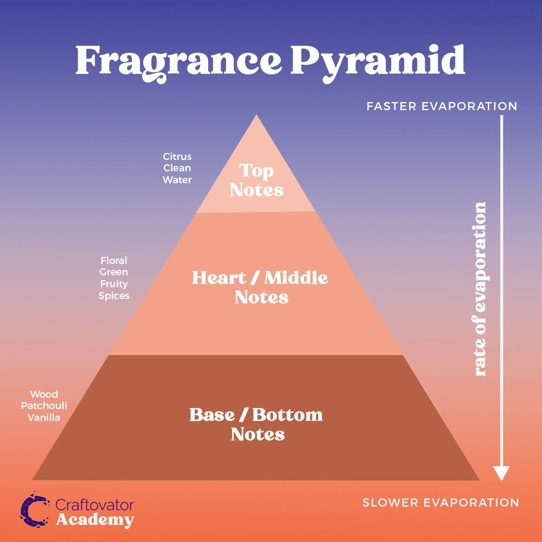
Master the Art of Layering Perfumes for an Irresistible Fragrance Experience
Create Your Signature Scent with Expert Perfume Layering
Layering perfumes is an art and it involves applying multiple fragrances strategically to create a unique and personalized scent profile.
Understand the Fragrance Wheel
The fragrance wheel is a visual representation of the various scent categories and how they relate to each other. It is divided into different fragrant categories of families that typically include floral, oriental, fresh, and woody notes. The individual fragrance notes that make up a perfume's composition are listed within each scent family, which are the notes that represent the scents you perceive when you smell the fragrance.

This can be a valuable tool when layering perfumes to discover fragrances that complement each other to create a balanced unique aromatic scent. For example, woody scents are often paired with floral or spicy notes to add more depth to the aroma for a warm and relaxing scent. From the wheel, the notes that are opposite to each other tend to complement each other.
Choose and Identify Key Fragrance Notes
Fragrances typically have top notes (initial scent), middle notes (heart), and base notes (long-lasting scent). Knowing these notes will help you determine how they will interact when layered.

Start With The Base Scent
Begin with the perfume that has the strongest or longest-lasting base notes. These notes provide the foundation for your layered scent and will be the most prominent as the fragrance evolves. Spray or dab the base scent on your skin, focusing on pulse points. Common pulse points include the wrists, neck, behind the ears, and inside the elbows. Apply the fragrance lightly to avoid overpowering the blend.
Add A Complimentary Scent
Choose a complementary fragrance that complements the base scent. It should have notes that enhance or balance the base fragrance. These should ideally be the heart notes followed by the top notes. For instance, if your base fragrance is floral, you might choose a complementary scent with woody or spicy notes. Spray or dab the complementary scent on the same pulse points where you applied the base scent. Be cautious not to overdo it; a little goes a long way.
Blend Gently
After applying both fragrances, gently tap or press your pulse points together to blend the scents. Avoid rubbing your skin, as this can break down the fragrance molecules and alter the scent that you are trying to achieve.
Assess, Adjust, and Explore
Especially when trying out a new blend, allow the fragrances to settle and interact on your skin for a few minutes. Smell the combination and assess whether it creates the desired effect. If necessary, you can adjust the balance by applying more of one scent or another. A good tip is to always try a little at a time if you are unsure as it is easier to add more than to neutralize an existing scent. Don't hesitate to experiment with different combinations of fragrances in your collection. Layering can be an ongoing exploration of scent, and you may discover new and exciting combinations that you love.
Enjoy Your Unique Scent
Embrace the personalized fragrance you've created through layering, as it allows you to express your creativity and adapt your unique scent to different occasions or moods. Remember that fragrance layering is highly subjective; what works best for you may differ from others' preferences. Trust your nose and intuition when creating your unique scent profile and have fun exploring the world of fragrances.